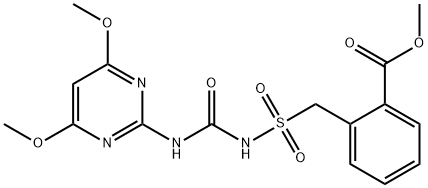Monensin , 98% , 17090-79-8
Synonym(s):
Monensin sodium salt hydrate
CAS NO.:17090-79-8
Empirical Formula: C36H62O11
Molecular Weight: 670.87
MDL number: MFCD00077826
EINECS: 241-154-0
| Pack Size | Price | Stock | Quantity |
| 5mg | RMB1413.60 | In Stock |
|
| 10mg | RMB2120.00 | In Stock |
|
| 25mg | RMB3816.00 | In Stock |
|
| 50mg | RMB5724.00 | In Stock |
|
| 100mg | RMB7989.60 | In Stock |
|
| 200mg | RMB11989.60 | In Stock |
|
| others | Enquire |
PRODUCT Properties
| Melting point: | 103-105°C |
| alpha | D +47.7° |
| Boiling point: | 608.24°C (rough estimate) |
| Density | 1.0773 (rough estimate) |
| refractive index | 1.5465 (estimate) |
| storage temp. | 2-8°C |
| pka | 6.6 (in 66% DMF) |
| CAS DataBase Reference | 17090-79-8(CAS DataBase Reference) |
| EPA Substance Registry System | Monensin (17090-79-8) |
Description and Uses
Monensin was found in the mycelium of Streptomyces cinnamonensis by Eli Lilly & Co. in 1967 in the course of screening for anticoccidial and growth-promoting substances for cattle, swine, and chickens. It shows antiprotozoal, antibacterial, and antifungal activities, as well as anticoccidial activity. Monensin is widely used to treat such infections and as a feed additive to promote the growth of livestock.
Monensin A is a polyether antibiotic first isolated from Streptomyces cinnamonensis in 1967. Monensin A is a broad-spectrum anticoccicidial antibiotic, also exhibiting antifungal and antiviral activity. Monensin A forms complexes with monovalent cations such as Li+, Na+, K+, Rb+, Ag+ and Tl+ and is thus able to transport these cations across lipid membranes of cells, playing an important role as an Na+/H+ antiporter. It blocks intracellular protein transport and is used in animals to prevent coccidiosis, promote growth and prevent bloat. Derivatives of monensin, monensin methyl ester and particularly monensin decyl ester, are used in ion selective electrodes.
Safety
| Hazard Codes | T |
| Risk Statements | 25 |
| Safety Statements | 36/37/39-45 |
| WGK Germany | 3 |
| RTECS | JH2830000 |
| Hazardous Substances Data | 17090-79-8(Hazardous Substances Data) |
| Toxicity | LD50 of monensin complex in mice, chicks (mg/kg): 43.8 ± 5.2, 284 ± 47 orally (Haney, Hoehn) |




